Goa is synonymous with pristine beaches, electrifying nightlife and a rich biodiversity. One of the most-lesser explored facets of Goa is its incredib
Goa is synonymous with pristine beaches, electrifying nightlife and a rich biodiversity. One of the most-lesser explored facets of Goa is its incredibly colourful and age-old culture that is well preserved by the locals here. Gracing the western bank of the subcontinent, this smallest state of India has been a major trading centre in the past which welcomed people and cultures from all over the world. This has resulted in the Goan culture becoming a vibrant mosaic of various traditions. One of the best ways of getting in touch with Goan culture and lifestyle is by learning more about its folk dances. Here are the folk dances of Goa.
List of the 13 Traditional Folk Dances of Goa
1. Dhalo Dance
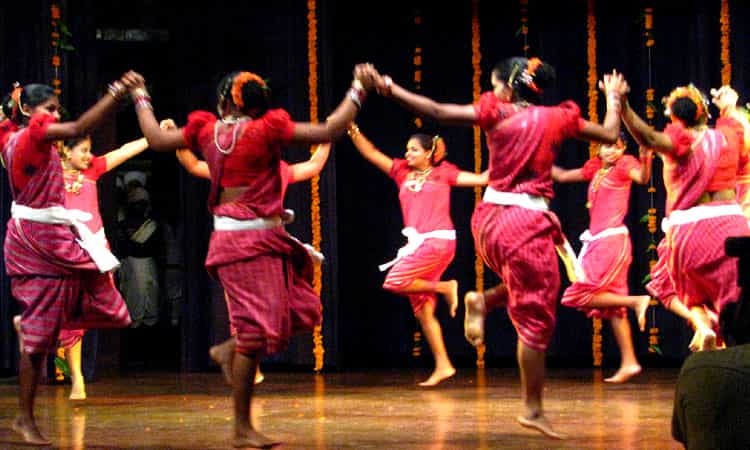
Performed primarily by the women folk of Goa, this is one of the most prominent dance forms of the state. The people make sure to dance Dhalo during the Pusha month or the Hindu month corresponding to the months of December and January. As a part of the dance ritual, women gather around after dinner to perform this. They form 2 rows facing each other and each is made up of 12 dancers. The women hold each other’s hands and move in complete sync that is a peaceful sight. The dance is accompanied with folk Marathi and Konkani songs. It is a treat for the eyes!
2. Corredinho Dance
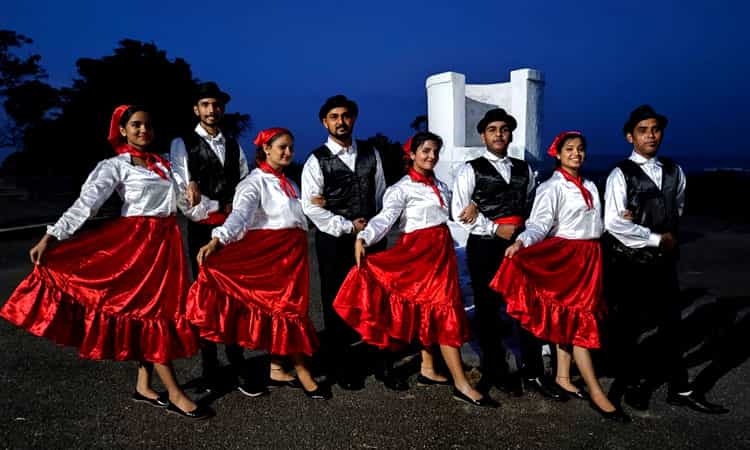
The corridinho dance of Goa was introduced during Portuguese rule in Goa. The dance was mainly reserved for the viewing and entertainment of the rich and elite class of the society. This is a couple dance performed by a man and a woman arranged in pairs of 6. The dancers wear their best, traditionally colourful garments that makes the whole dance presentation incredibly vibrant to look at. It is also often referred to as the folk peasant dance by the Goan elite youth. The dance is a beautiful Portuguese cultural representation in Goa.
3. Dekhni Dance
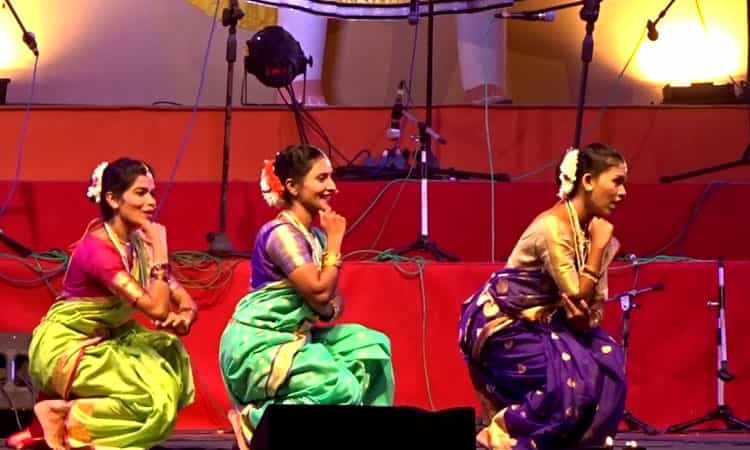
Following the list of folk dances in Goa performed by the local women here, Dekhni is another one. The term Dekhni, in Konkani, means beauty. However, unlike the Dhalo dance form this dance is performed to portray the life of a Devdasi. The concept of Devdasi dates back to ancient India when girls were married off to gods and were expected to take care of him their whole life. They serve the lord or the deity their whole life in a temple. This ancient past makes Dekhni one of the oldest dance forms of Goa. It is a beautiful indo-western dance form with semi-classical touches.
4. Fugdi Dance
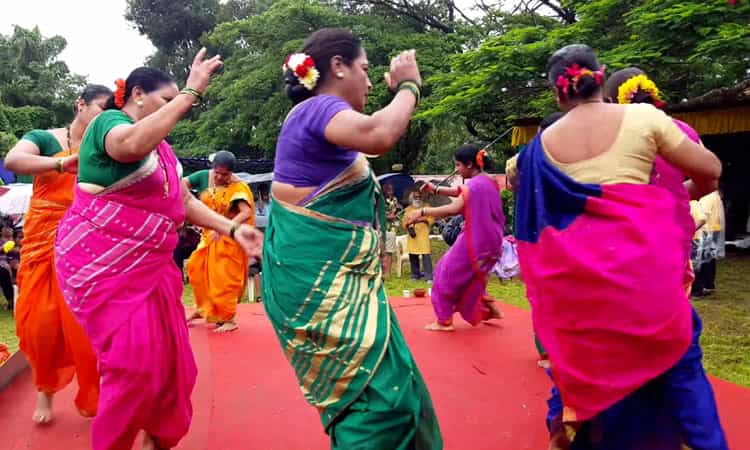
The women of Goa sure know how to enjoy themselves. Fugdi is another women-centric folk dance of Goa. A group of women arrange themselves in circles and move around in perfect sync. There are no singers or musicians to accompany the dance performance. The dancers sing among themselves while moving in energetic and elaborate steps and patterns. The dance is performed in some of the major events, occasions, religious gatherings and festivals. The dance has a deep symbolic meaning where it represents the power and energy concealed in every human being.
5. Lamp Dance
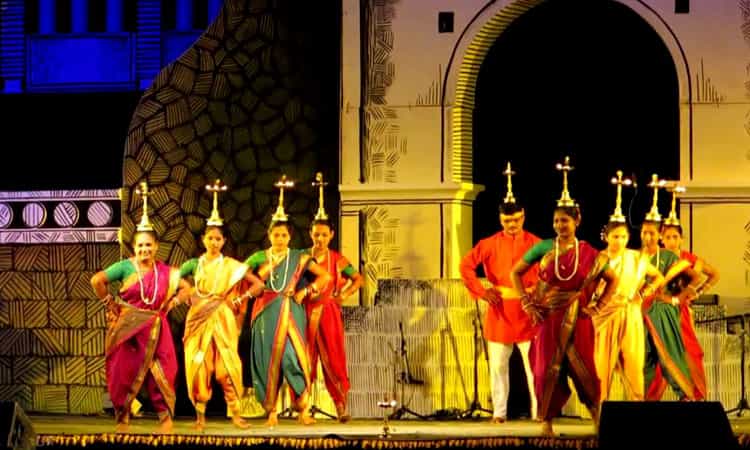
Lamp dance is one of the most difficult and challenging dance forms of Goa. It is a display of skill, balance and core strength. The performing artists doing this dance balance brass lamps on their head and move in careful, slow and calculated movements. The whole performance is spectacular to witness. The lamps that the dancers balance on their heads are quite heavy and performing dance while simultaneously balancing these lamps is quite a task and a testament to the dedication of the dancers. Try to witness this performance at least once during your visit to Goa.
6. Dhangar Dance
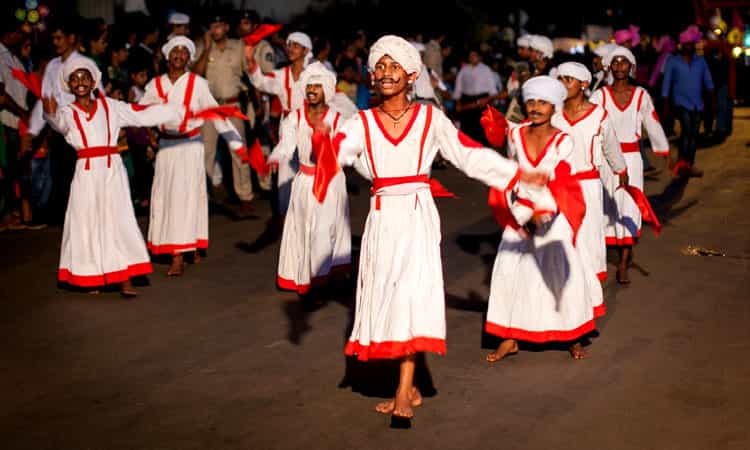
The Dhangar dance of Goa can be defined best as a dance to commemorate the life and times of Lord Krishna with his lady love Radha. The divine story is told through this Dhangar Dance, majorly by the people of the shepherd community of Gujarat during the holy occasion of Navratri. The head of the family starts off this dance on the first day of Navratri and other family members join in from the following days onwards. The idols of Lord Krishna and Radha are placed at the central location in the village. People gather around this setup and perform this dance whose steps has deemed it as one of the simplest and slowest folk dances of Goa.
7. Dashavatara Dance
![]()
According to Hindu mythology, the term Dashavatara refers to the 10 different incarnations of lord Vishnu. The dance is performed by both local men as well as women of Goa. As mentioned earlier, the dance depicts the 10 different manifestations of Lord Vishnu. The dance involves elaborate dance steps, formations, patterns and depictions which is a mesmerising way of storytelling. Various mythological characters from the Hindu tale are also introduced one by one. The dancers wear heavy face paint, ornaments, artistic headgear etc. depicting the different Lord Vishnu incarnations.
8. Shigmo Dance
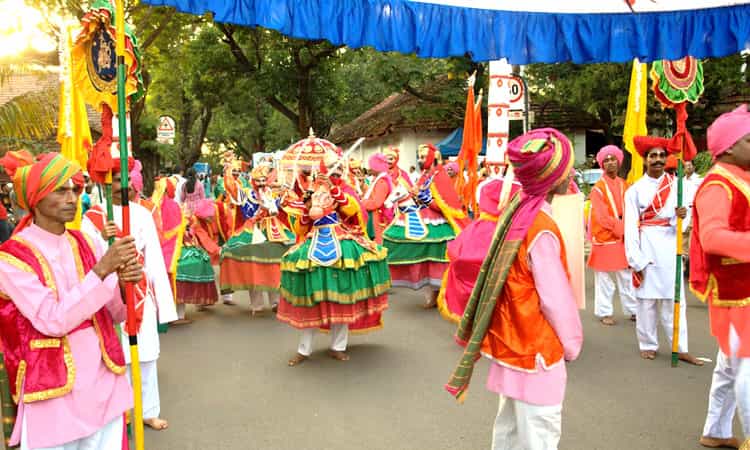
Shigmo or the dance of colours, is one of the most prominent dance forms of Goa. A major part of the Goan population depends on agriculture and crops for their livelihood. So this dance is performed during the spring harvest season to welcome new and healthy crops. The dance is incredibly popular among the farming folks of Goa. Men and women both play a major role in the whole performance structure. Another belief for the dance is that it is only performed to celebrate the victory of the soldiers returning from the battlefield. No matter what the reason is, the dance performance in itself is a spectacle to witness.
9. Kunbi Dance
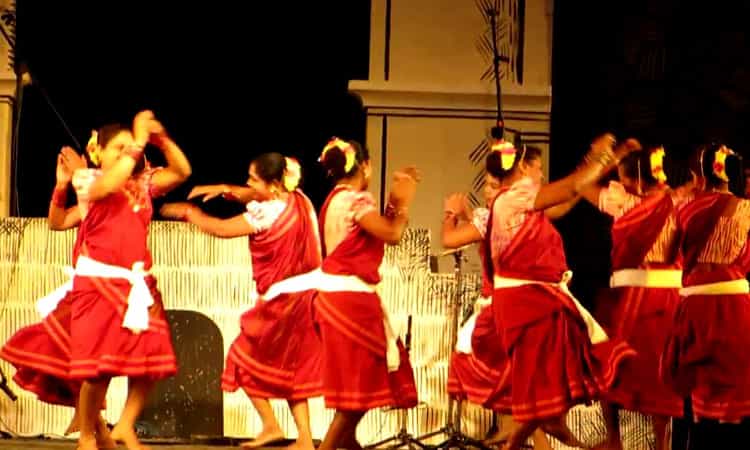
Goa is home to a number of tribes and the tribal population occupies a large space in the state. As a result of this Goa is one of the spectacular melting pot of different folk cultures and traditions. The Kunbi Dance finds its roots in the Kunbi tribal population of Goa. Done in social gatherings, religious occasions and festivals, the Kunbi Dance is performed by the women of this tribe. The dance involves elegant and graceful steps done in synchronised patterns. These women can be seen smiling, enjoying and having fun while doing this dance which adds a lot of vibrancy to the whole experience.
10. Romat Dance
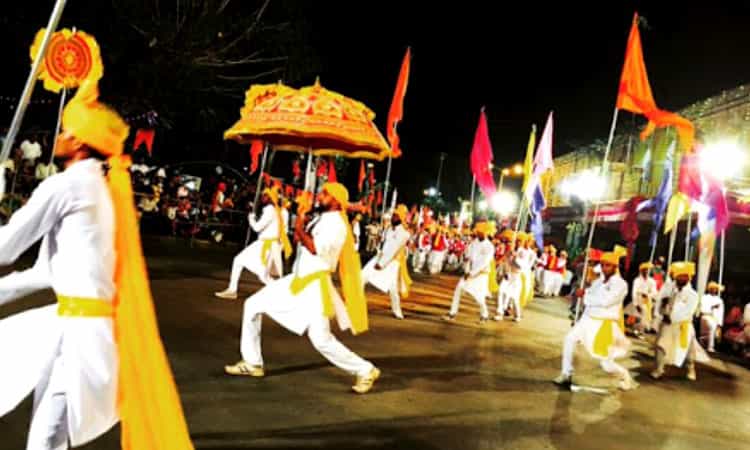
Romat is a unique dance form of Goa that is a combination of dance and street show. The group of dancers and musicians in this dance move in the form of a procession. Instruments like big drums and cymbals are used for the performance and the dancers dress up in bright and vibrantly colored attire complete with glitters and sparkles. While the procession moves forward huge banners and sun shades carrying different symbolic expressions are carried as well by the crowd through the procession. It is one of the most popular dance forms of Goa and a fun experience to witness.
11. Goff Dance
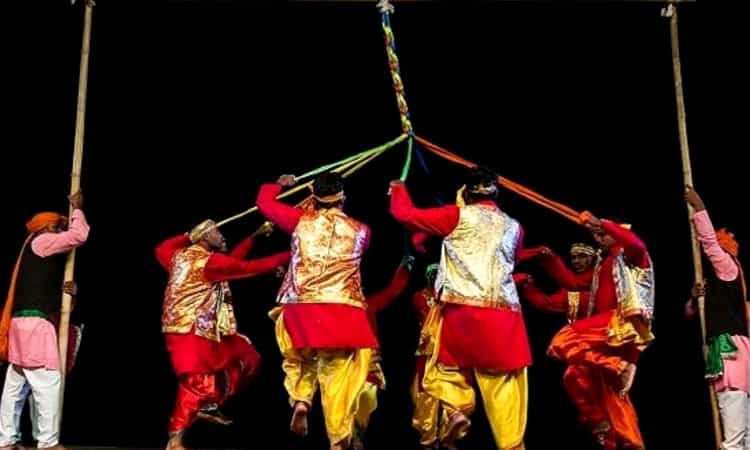
The folk Goff dance of Goa, is an exotic confluence of vibrant cultural strands of the rulers and dynasties that have ruled over Goa. The dance is presented annually by the peasant community of Goa especially during the Shigmo festival. The dance is a representation and a way of manifesting the pleasure and happiness of the Goan peasants following a bountiful harvest season. Every dancer holds a colourful cord that hangs from the centre of the dance location known as ‘mand’. The dancers form a beautiful, colourful and intricate braid by combining these cords.
12. Musal Dance
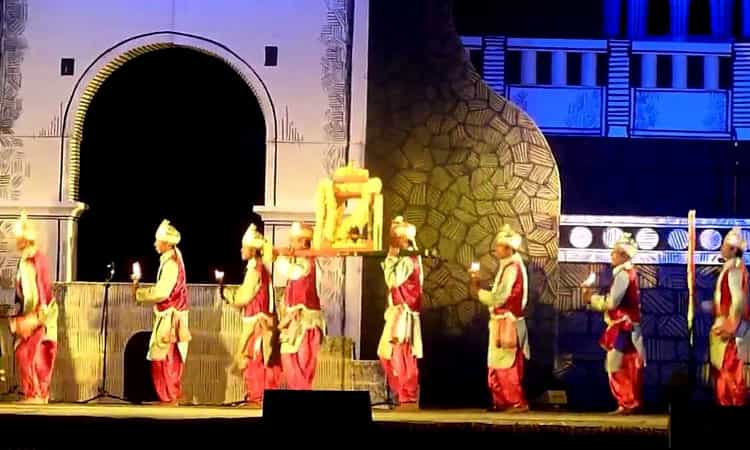
The musal dance of Goa is another way of paying homage to the life-giving agricultural source in the state. The dance tradition is believed to have originated from the 11th century from the village of Chandrapur which had served as the capital of Goa from 7th to 8th century. The dance performance involves the use of weapons in war during the ancient ages. The Kshatriya warriors of Goa are believed to have carried Musal weapons during the war times. The dance form is performed with great enthusiasm to commemorate victories during wars. Traditionally the dance performed is accompanied with 22 couplets of Songs.
13. Ghode Modni Dance
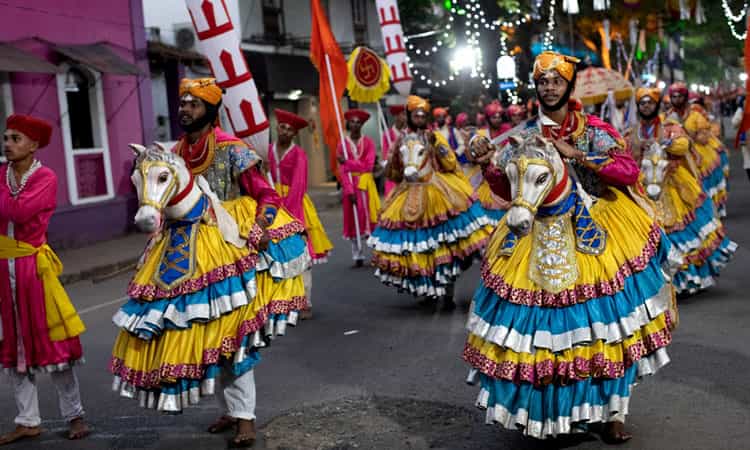
This folk dance of Goa is called Ghode Modni since it involves the movements of a horse which is showcased through the use of a fake dummy horse inside which a hole is cut and the dancers carry this horse while dancing. The dance is done in order to remember and commemorate the victory of the Marathas in Goa over the Portuguese which was a huge deal to shape the current history of Goa. During the Shigmo festival, the Ghode Modni Dance is looked forward to by the locals. Other than the prop wooden horse, the dancers wear traditional colourful clothes, just like the Maratha warriors with anklets in their feet.
Frequently Asked Questions (FAQs)
Q. When Is The Best Time To Visit Goa?
Ans. Mid November to mid-February is the best time to visit Goa.
Q. What Is The Difference Between North And South Goa?
Ans. North Goa is all about happening nightlife, shopping and a lively environment. On the other hand south Goa is all about untouched beaches, peace, tranquility and calmness.
Q. What to Do In South Goa?
Ans. You can go water skiing, parasailing, take a trip to bat island, go butterfly beach hiking and beach camping in South Goa.
Q. Are Goans Friendly?
Ans. Yes. Goans are very warm, welcoming, helpful, humble and friendly.
Q. Which Is The Local Language Of Goans?
Ans. Konkani is the local language spoken by the locals of Goa.


COMMENTS